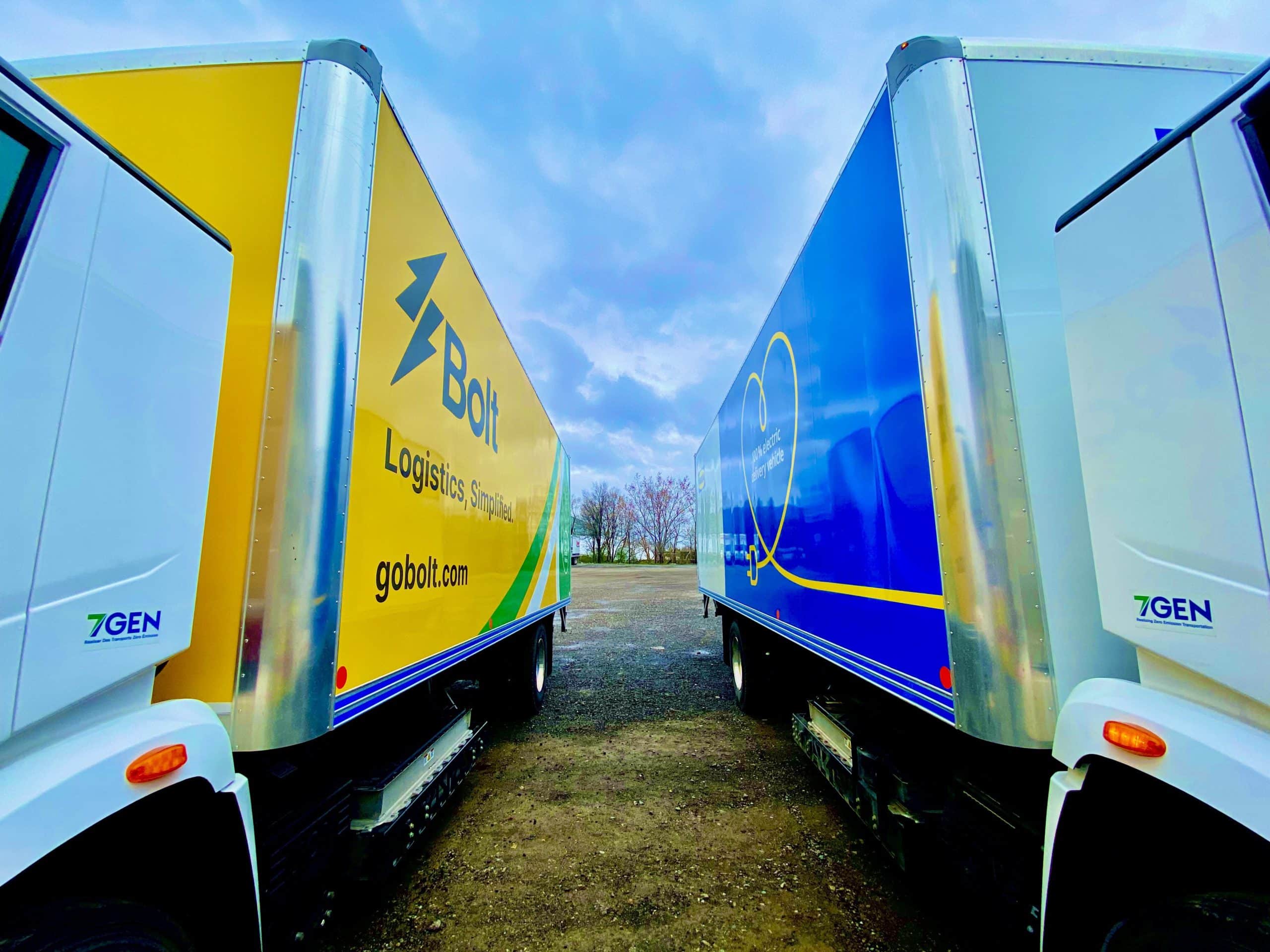You’ve committed to electrifying your fleet. The next big decision is whether to buy your electric vehicles (EVs) and charging infrastructure outright or lease them through a partner like 7Gen. In 2025, this choice is more critical than ever. With higher upfront costs, uncertain depreciation, and fast-evolving technology, selecting the right path will shape your operational and financial flexibility for years to come.
The Market Context in 2025
Canada’s zero-emission vehicle (ZEV) market is still growing, but at a slower growth rate than many analysts expected. Transport Canada has mandated that all new light-duty vehicles sold by 2035 must be zero emission, with interim targets of 20 percent by 2026 and 60 percent by 2030. Early 2025 data shows the 2026 targer to be a challenge, a trend linked to shifting incentive structures, economic uncertainty, and uneven adoption across provinces.
Infrastructure is another challenge. A Deloitte Canada report highlights that charging availability and depot readiness remain major bottlenecks for electrification. Fleets that choose to own must invest heavily in site upgrades, permitting, and long-term maintenance. By contrast, leasing partners often bundle infrastructure solutions with vehicles and services, covering design, installation, and ongoing management. This bundled approach can be especially valuable for fleets that want to avoid fragmented contracts and ensure their charging systems evolve in step with vehicle technology.
EV Fleet Leasing vs Buying: A 2025 Comparison
| Factor | Buying EVs | Leasing EVs |
| Capital & Cash Flow | Significant upfront investment in vehicles and chargers. Capital tied up long term. | Lower upfront costs and predictable monthly payments. Preserves capital for other priorities. |
| Depreciation & Resale | Fleet owner absorbs full depreciation risk, especially with rapidly advancing technology. | Depreciation risk is shifted to the lessor, enabling easier upgrades. |
| Technology & Obsolescence | Owning can lock you into outdated battery or charging systems. | Leasing ensures access to the latest models and charging standards. |
| Maintenance & Operations | After warranties expire, the owner covers all maintenance and repairs. | Some leases include not only vehicle maintenance but also charger management, reducing complexity.” |
| Incentives & Compliance | Eligible for federal and provincial rebates, but administration is the owner’s responsibility. | Most incentives also apply to leased vehicles, and leasing partners often manage the process. |
| Fleet Flexibility | Adjusting fleet size or composition is slower and more costly. | Leasing makes it easier to scale up or down, with remarketing handled by the lessor. |
| Sustainability & Image | Vehicles often remain in service longer, leading to higher costs and aging technology. | Regular upgrades keep fleets aligned with ESG goals and driver expectations. |
Taken together, this comparison shows why leasing is gaining traction. Beyond predictable costs and reduced depreciation risk, the ability to bundle vehicles, maintenance, and charging infrastructure into a single agreement is becoming a best practice for fleets that want to simplify operations and future-proof their investments.
What This Means for Fleets
Ownership can work for organizations with stable usage patterns, strong balance sheets, and in-house expertise for long-term maintenance and infrastructure. It also allows full control over assets, which can be appealing if resale markets are predictable and capital costs manageable.
For most fleets, however, leasing provides the smarter path in 2025. It lowers upfront investment, reduces exposure to uncertain resale values, and enables greater flexibility as technology, incentives, and policies evolve. Leasing partners can also simplify infrastructure by bundling design, installation, and management of charging systems. At 7Gen, we go one step further by integrating carbon credit monetization into our leasing packages, ensuring every kilowatt-hour delivers financial and environmental value (see our blog on carbon credits).
Next Steps
Deciding between leasing and buying starts with an honest look at your fleet’s profile. Consider the number of vehicles you need, your annual mileage, and how often you expect to replace assets. Factor in access to capital and whether locking funds into depreciating assets makes sense for your business. Compliance with incentive programs is also a consideration: owners must handle applications and reporting themselves, while leasing partners often streamline this process. Finally, think about infrastructure. Buying requires you to plan, fund, and maintain chargers directly, whereas leasing packages frequently cover this end to end.
7Gen helps companies evaluate both options with detailed cost models and tailored solutions. A key advantage of our leasing programs is that vehicles, chargers, maintenance, and even carbon credit optimization are bundled into a single package with one predictable monthly payment. This simplifies budgeting and ensures fleets can electrify with confidence and agility.
If you are weighing lease versus buy in 2025, now is the right time to act. Contact 7Gen to explore how a single bundled payment can reduce costs, protect against risk, and future-proof your fleet.

